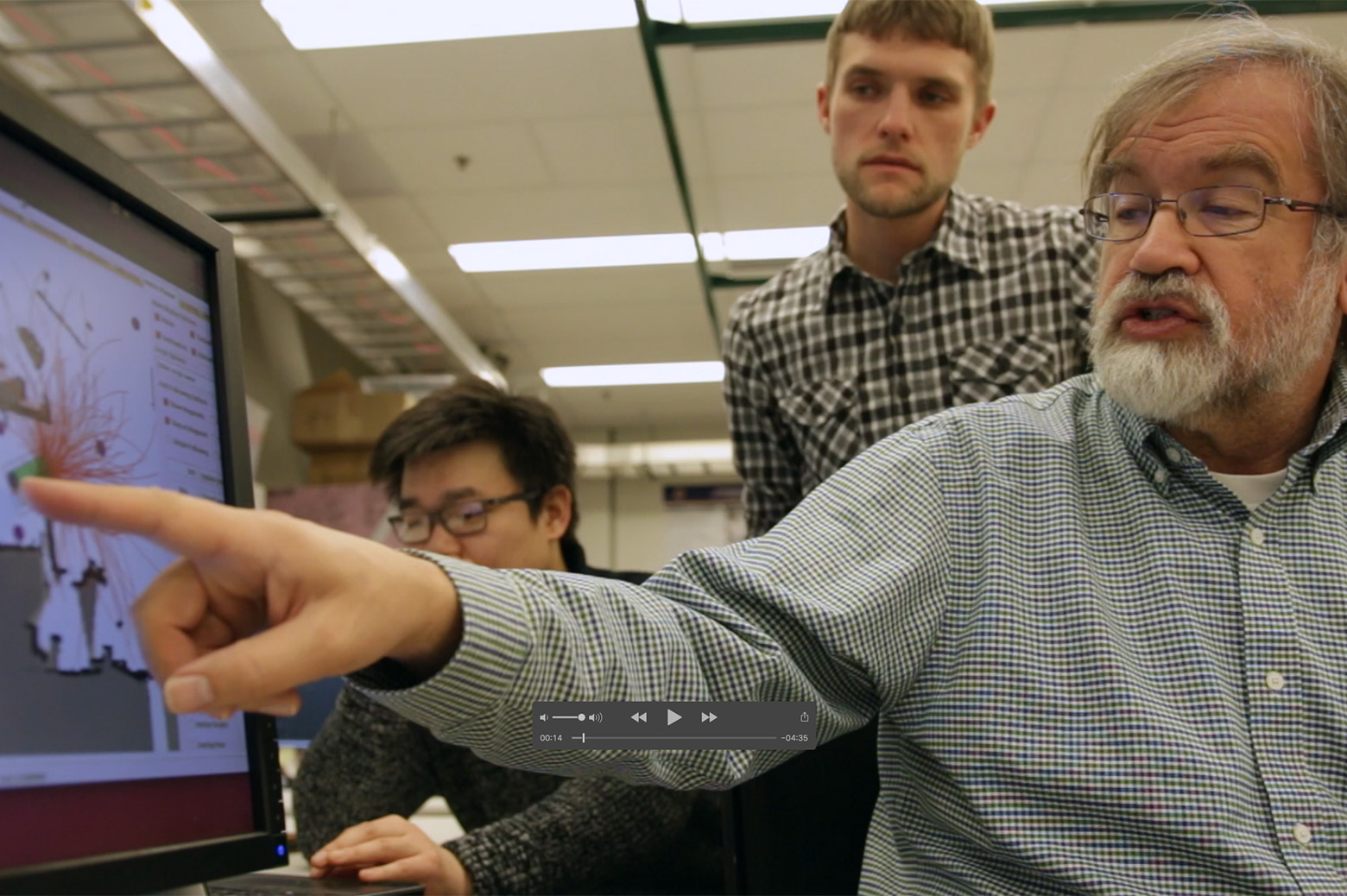Researchers seek to help the disabled with intelligent robotic wheelchair
Vulcan, the intelligent robotic wheelchair, aims to help the elderly and those with disabilities effortlessly move around their environment.

 Enlarge
Enlarge
Vulcan, the Roman God of fire, is believed to be the only Roman God with a disability. He was depicted of having crippled feet and some myths say that he built a wheelchair to help him move around and overcome the burdens of his disability. Vulcan, the intelligent robotic wheelchair, has a similar goal in mind, which is to help the elderly and those with disabilities effortlessly move around their environment.
Prof. Ben Kuipers created Vulcan a number of years ago, and most recently CSE graduate student Collin Johnson and researcher Dr. Jong Jin Park have been working to improve the wheelchair by adding more innovative capabilities.
Those innovative capabilities include: the ability to learn the spatial structure of the environment, which allows the robot to efficiently represent its opportunities for travel in the environment; the ability to plan and carry out motion in the environment, avoiding both static and dynamic obstacles; and using its perceptual capabilities to handle the kinds of perceptual problems that arise in natural human built environments.
When it comes to the spatial structure, the robot continually builds and updates an accurate geometric model of the local space around it, and maintains accurate knowledge of where it is located and how it is oriented in that geometric space. As it travels through a large environment, it uses the local geometric model to describe the significant places and the connecting paths linking them. Then it builds an abstract topological graph representing the overall structure of the space.
The wheelchair’s motion must be safe, comfortable, and graceful, and must be customizable to the travel preferences of the specific driver. The researchers created a general method using model-predictive control that guarantees safe motion among static obstacles and it does a great job of avoiding dynamic pedestrians.
With human built environments, there can be glass barriers, walls, doors, windows, etc. that are invisible to typical robot sensors such as lidar and vision. Kuipers, Johnson, Park, and former students Paul Foster and Grace Tsai developed methods for using lidar to perceive glass barriers, as well as, methods for using computer vision to build 3D models of the robot’s immediate surroundings.
Vulcan’s knowledge and control systems help make it more effective for the 2-4 million people in the United States who need more than just a wheelchair. The goal of these advances in technology is to help people with disabilities to gain new independence and life experiences.

 MENU
MENU 
